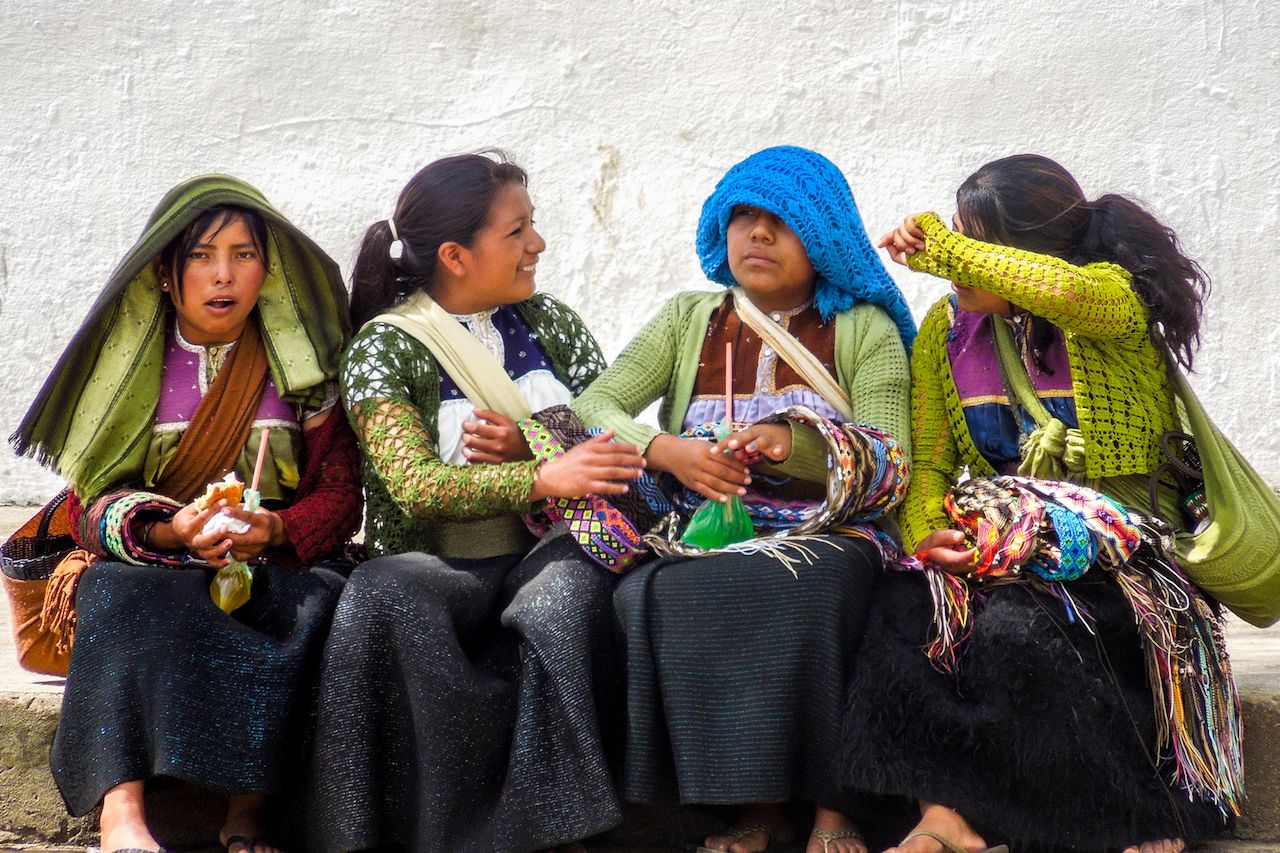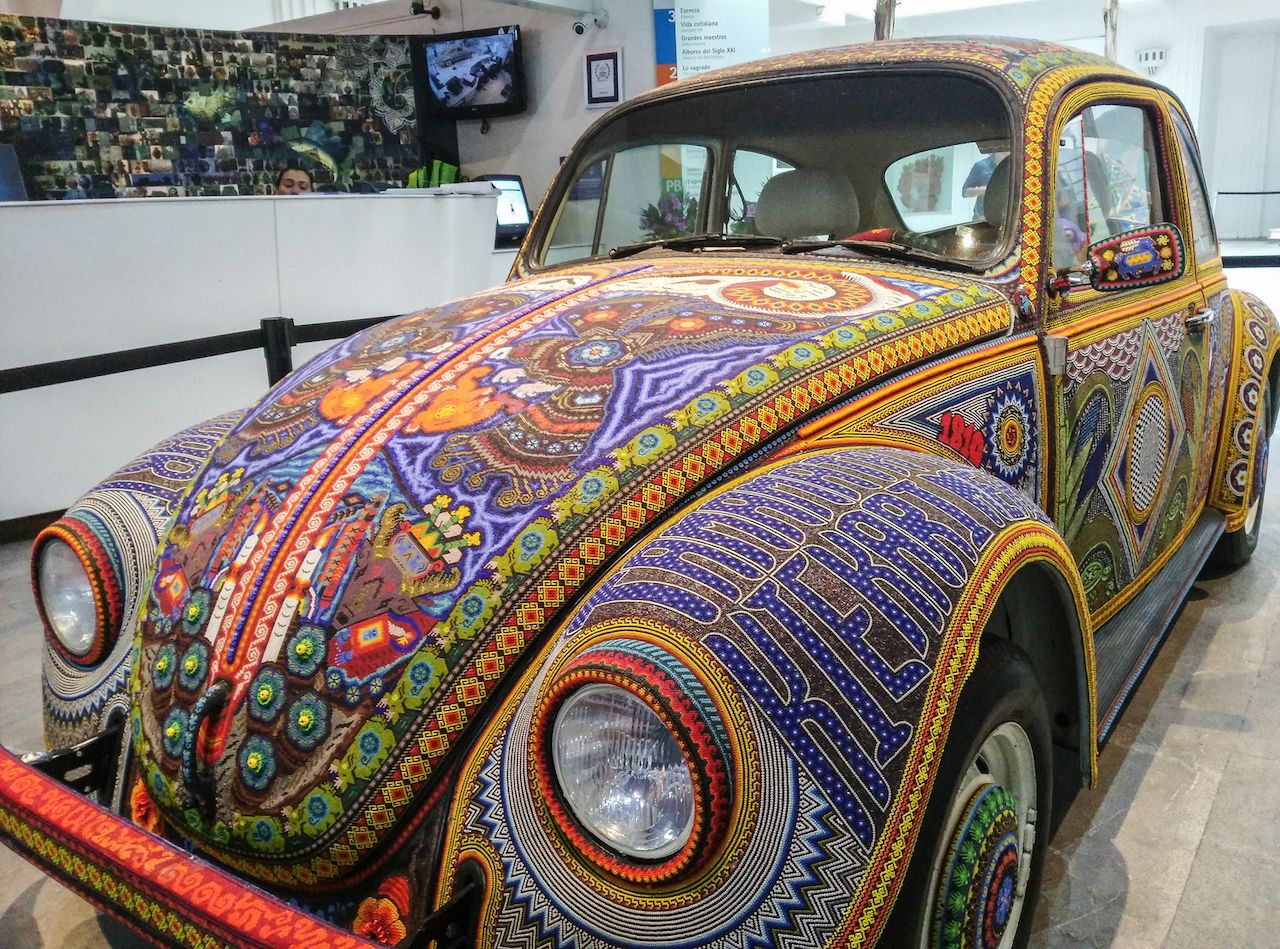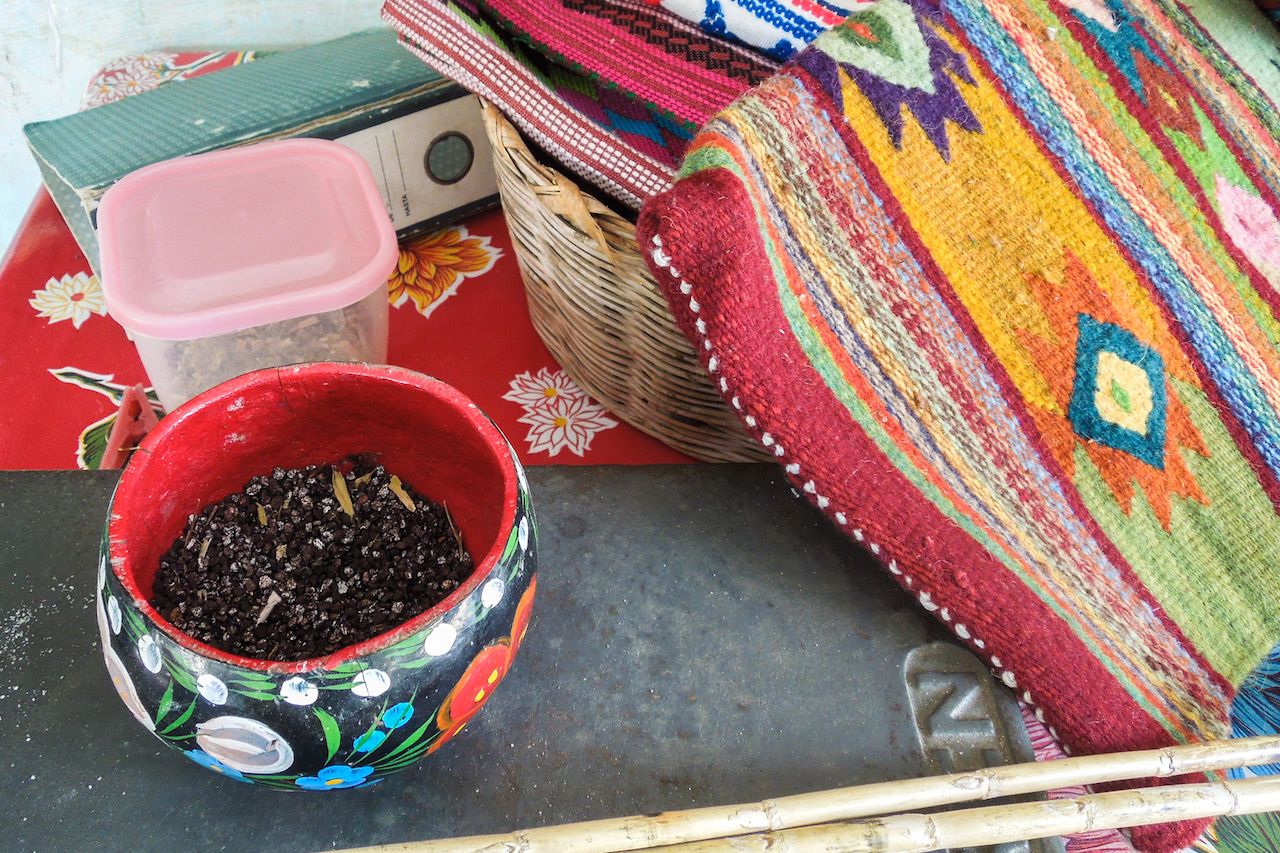There are around 15 million indigenous people, distributed in 56 different ethnic groups, living in Mexico. Each group has its own history, language, and traditions, as well as struggles to preserve its culture. Here are eight places in Mexico where you can experience indigenous cultures.
1. Cuetzalan (Nahua)

Photo: Cuetzalan Magico
In the heart of the Sierra Norte in the state of Puebla, surrounded by coffee plantations, underground caves, and waterfalls, a village with cobblestone streets and white colonial houses is home to indigenous people called Nahua. Cuetzalan, situated 176 km north of the city of Puebla, the state capital, has preserved the ancient traditions of its original inhabitants.
Tlacoyos (or tlayoyos), oval-shaped corn masas stuffed with cooked ground peas and avocado leaves and fried and sprinkled with chili salsa and cheese are sold around the central plaza from dusk to dawn. Men in white outfits, hats, and homemade sandals and women in colorful dresses offer seasonal fruits and coffee on the stairs that lead to the church. The surrounding cafes serve only local coffee where you can order café de olla, a traditional drink prepared with cinnamon and piloncillo in a huge ceramic pot.
To purchase a traditional embroidered blouse, visit Cuetzalan on Sunday when inhabitants from surrounding communities gather on the main square to sell home-produced coffee, vanilla, pepper, beans, cinnamon, tobacco and colorful handmade textiles. And if you’re looking to stay in a hotel run by indigenous people choose Tosepan Kali or Hotel Taselotzin.
2. San Cristobal de las Casas (Tzotzil)

Photo by author
The third largest town of the state of Chiapas is home to over 30,000 Tzotzil, and their strong indigenous identity is visible on every street corner.
The best place to experience the culture is the central market where you can feast on tamales and admire colorful handmade textiles. If you would like to see first-hand how scarves, shawls, and other pieces of clothing are made, head to the community of Zinacantan, some 30 km from San Cristobal.
If you’d like to learn more about traditional medicine, head to the Museum of Mayan Medicine (Museo de Medicina Maya) that forms part of the Center for the Development of Mayan Medicine (Centro de Desarrollo de la Medicina Maya) where ancient Tzotzil and Tzetzal practices are in use. Its shop sells home-produced herbs, creams, and tinctures. You can even ask for a temazcal, a traditional steam bath.
Make sure to check out the nearby community of San Juan Chamula, particularly the main church, where rituals that include chicken sacrifice, pox drinking, singing, and dancing take place.
3. Papantla (Totonacs)

Photo: Sylvia
The dance of the flyers is a ceremony consisting of 5 participants climbing a 30-meter pole from which four of them launch themselves (after being tied with ropes) to descend to the ground. The fifth remains on top of the pole, dancing and playing a flute and drum. Although the origin of the ritual isn’t clear, Papantla and its inhabitants, the Totonacs, have adopted it as their own. You can see this traditional dance on the main square where you’ll also find a magnificent mural tribute to the Totonac culture.
Only a few kilometers outside of town, check out El Tajin, a well-preserved archaeological site that contains information on the rituals and the daily life of Totonacs.
If you want to learn more about Totonac art and culture, visit the Center for Indigenous Arts.
4. Tepic (Huichol)

Photo by author
Huichol art is insanely colorful and extravagant, but it is also mystical and symbolic of the cycle of life.
The most common Tepic art pieces are “yarn paintings” and objects such as wooden masks and animal sculptures decorated with small plastic beads. While the materials and the purpose of the items have changed over the years, they retain their religious and symbolic significance. Huichol art pieces are easily obtainable anywhere in Mexico, but if you’d like to meet the artists, visit Tepic in the state of Nayarit.
Zitacua, situated on the outskirts of the Tepic, is entirely populated by Huichols, and almost all of them live off their art. If you want to purchase Huichol art, make sure to buy it directly from the artist; you’ll contribute to their economy and get an opportunity to have a conversation. The inhabitants of Zitacua still wear the traditional garment and, when it comes to making important decisions, consult the traditional Huichol authorities. There’s even a ceremonial center where rituals that include animal sacrifice are commonly performed.
Although the center of Tepic is not all that interesting, there are a few museums worth visiting: the Regional Museum of Anthropology and History and the Museum of Popular Arts.
5. Batopilas (Tarahumara)

Photo: Diego Fernandez Briseno
Batopilas is a small village of no more than 1,000 inhabitants in the heart of Copper Canyon in the northern state of Chihuahua. Once a thriving mining center, abundant with silver and advanced technology, it has become a quiet town with three main tourist attractions: unspoiled nature, architectural remains of its rich history, and Tarahumara culture.
There are about 120,000 Tarahumara people (or Raramuri) in Mexico and many of them still live in caves or cliff overhangs. Tarahumaras can run up to 270 km straight without stopping, or up to 700 km in just a few days. It is believed that their widely-dispersed settlements and the absence of any transportation have caused the Tarahumaras to become the best long-distance runners in the world.
Tarahumaras are also known for their craftworks made of wood and sotol, a type of plant that resembles a palm tree. Pots, violins, drums, baskets of all sizes, and jewelry are sold in the city center of Batopilas, where you can also try traditional tesgüino (corn beer). If you’d like to visit some of those still living in caves, book a tour via your hotel.
The trip to Batopilas is somewhat difficult but worth taking it. The best way to get there is by taking a train from Chihuahua to Creel, where you’ll need to hop on a bus. Keep in mind that temperatures on the top of the canyon are quite low while in the valley reach up to 45°C.
6. Patzcuaro (Purépecha)

Photo: Thomassin Mickael
On the shore of Lake Patzcuaro, in the state of Michoacan, is the town of Patzcuaro, home to the indigenous group Purépecha. Patzcuaro and Janitzio (one of the islands on the lake) are famous for their Day of the Dead celebrations, but they are worth visiting any day of the year.
The House of 11 Courtyards is a craft center where you can purchase traditional Purépecha art and see the artists creating beautiful pieces as devil masks, jaguars and owls, wooden boxes, clay pots, and mantles. Another excellent place to learn more about indigenous art is the Museum of Popular Arts and Industry.
If you want to try traditional Purépecha food, go to the market or stop at a street corner stand and order corunda or uchepo. Corunda is salty and served with sour cream and chili salsa while uchepo is usually sweet.
While there, check out archaeological site Las Yacatas, former capital city of Purépecha, famous for its step pyramids.
7. Capulalpam de Mendez (Zapotecs)

Photo by author
The Zapotec people live high up in the mountainous region of the state of Oaxaca, about 70 km from its capital Oaxaca, in the small village of Capulalpam de Mendez.
Whether you’re in perfect health or suffer from some illness, it’s worth visiting the Center for Traditional Medicine Capulalpam where traditional healers perform spiritual cleansings using different sorts of plants or temazcal. If you have specific medical problems, you can ask for a thorough check-up by a healer who will prescribe you a medicine — all natural, of course.
When it comes to food, the local market is the best place, as usual. Try their famous mole negro or Amarillo and have a cup of pericon or Santa Maria (a flower tea), or, if you prefer something stronger, home-produced mezcal.
The women of Capulalpam are known for their weaving of colorful blankets, ponchos, huipils, blouses, and tablecloths, while men devote their time to the carving of small wooden objects. If you want to purchase some, hit the market.
8. Izamal (Mayas)

Photo: Christopher William Adach
Izamal is a lively town that was built upon the ruins of the Mayan empire where practically all the colonial houses are painted in yellow and where the modern Mayas proudly exhibit their traditions.
The Cultural and Craft Center Izamal is a place that exhibits all types of handicraft, made of wood, textile, clay, metals, vegetable fibers, seeds and feather. The staff will give you a great explanation of their meaning; however, if you’d like to buy something as a souvenir, do it on the street directly from the artists.
You can’t leave this town without a typical Yucatec hammock. The most beautiful Yucatec hammocks are created in the village of Tixkokob, some 40 km west of Izamal. ![]()

